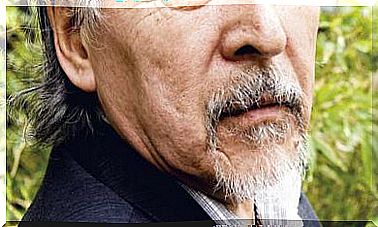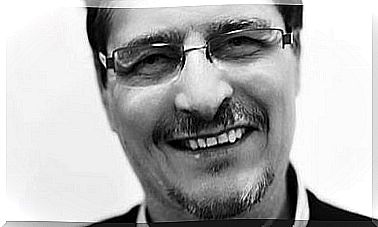Harness The Power Of Your Imagination
Imagination can be your greatest ally or your worst nightmare. Just as it magnifies fears and blocks us, it can help us hone skills and even overcome childhood trauma.

If you have ever mentally reviewed some transcendent conversation for you, such as a job interview, and if also in this imaginary repetition you have allowed yourself to express what you really would have liked to comment on and that did not occur to you at that moment, do not worry: you have no problem.
You are simply using the power of your mind to train the appropriate response for the next time you go through such a circumstance. In all probability, when you find yourself in a similar situation again, you will know what to say and you will be able to present your arguments in a much more fluid and valid way for your interests.
The ability to imagine is one of the most powerful in our brain, yet it is among the least studied and analyzed.
Imagination helps us progress
Human beings not only have the extraordinary quality of being able to represent images in their mind without having to be aware of the real stimulus, but they can also, during these imaginary representations, experience the same sensations that they would have had in similar circumstances in their real life.
Imagination can help athletes practice and reinforce certain movements essential to progress in their respective disciplines. This is how it was applied, already in the 1930s, by authors such as Jacobson and Sackett. More recently, Álvaro Pascual-Leone, a Spanish professor of Neurology at Harvard University, has shown how mental practice helps musicians improve their skills.
“Imagining an action induces brain changes that are in some respects identical to those that occur when doing it physically,” says Pascual-Leone.
When imagining a scene, areas of the brain similar to those that are activated when we are actually living it are activated. In fact, for our brain, there is hardly any difference between a lived scene and an imagined one, since both can provoke very similar reactions and emotions. This is the reason why, when we read a book or watch a movie fully focused on the story, we connect internally with the characters and experience the same emotions that they are feeling.
In recent decades, psychologists have begun to delve into the study of imagination and spectacular applications are being found in different fields, such as sports psychology, music or psychotherapy. Among many others, we can highlight the following:
Athletes improve their practices
In 2015, the Olympic and world badminton champion Carolina Marín suffered, with a month to go before the championship in which she had the possibility of revalidating her title, a foot injury. For two weeks, despite not being able to train normally, he did not stop working and prepared for the tournament using “imagined practice”, an exercise widely used in sports psychology that consists of visualizing oneself performing the movements as if we were really in the game. track.
Despite being immobilized, her brain continued to train and reinforce the required movements and, in this way, the time of the injury was not wasted time. Carolina recovered from her injury in time and was able to participate in the competition. She played brilliantly, beat her rivals and was proclaimed world champion. As Marín later commented, part of his success was due to his training with his imagination.
Musicians prepare their performances
Julio, a violinist friend, once told me how he prepared his recitals. In the weeks leading up to a concert, he would rehearse throughout the day, going over and over the more complicated parts of the score. In addition, every night, before going to sleep, he visualized himself on stage playing the concert. He imagined all the details: the audience, the light, the orchestra, and mentally practiced the whole piece.
Researchers have shown that, during sleep, the brain consolidates and organizes all the learnings from the day before, so that Julio’s practice before sleeping served him enormously in his preparation. When the day of the performance arrived, Julio went up to the stage calm and convinced that everything was going to be fine. Not surprisingly, he had already played the concert countless times in his head.
Combine real and imagined practice
It has been proven that the best way to get excellent results working with your imagination is by combining real experience with imagined practice. Practicing, previously, live gives us a base on which we can work later in an imagined way.
It is wrong to think that we can achieve spectacular improvements only with visualizations.
We cannot, for example, learn to ride a bicycle if we have never ridden one. But it is true that once the basic skills of the exercise we want to perform have been experienced in reality, imagination can accelerate learning and enhance the result.
The programming of the past is still very present
In our daily lives we can find many examples of how the power of imagination influences us , although, unfortunately, the most common effects are usually associated with negative consequences. Every time we repeat ourselves (it can be hundreds of times throughout the day) phrases such as “this scares me” “I am not going to be capable” or “others are better than me”, we are generating and reinforcing a negative expectation before a situation and we are condemning ourselves to failure.
Failure programmed for a long time in our brain (probably from our childhood) that, by confirming that we are clumsy and useless, acts by reinforcing the negative image that we harbor about ourselves. If we do not stop this flow of thoughts, we will spend our lives in a cycle of negativity, toxic and sick, from which it is very difficult to get out.
According to Bruce Lipton, “the subconscious is a processor of information a million times faster than the conscious mind, and uses between 95 and 99 percent of the time the information already stored from our childhood as a reference.”
It is vitally important to show exquisite care with the expressions that we address to children during their first years of life, since it is a period in which their mind is developing and is extremely malleable (any word we say to them can exert an enormous impact on them).
If the adult’s speech towards children is made up of rejection and negativity, they will take the words as true and their reality will be configured based on thoughts (reinforced day by day by their imagination) in which they will see and feel like incapable people , fearful or insecure.
The role of imagination in therapy
When a person comes to consultation with a very negative view of himself, I say: “Don’t you trust yourself? Do you doubt your abilities? Have you not realized how powerful your mind is? See how it forces you to smoke even if you don’t want to or how it creates an anxiety crisis that makes you think that you are on the verge of death. You are the one who creates all this. Your mind is very powerful. The only thing that happens is that you have not learned to use it in a positive way.
In therapy, we cannot go inside our brain to modify the neural networks of negative patterns. However, we are able to use our imagination as a means of promoting and reinforcing the change in attitude that we want.
As Ramón y Cajal wrote more than a century ago, “every man can be, if he wants to, a sculptor of his own brain.”
We cannot change our past, but we can transform the attitude we manifest towards it. In addition, we all have the ability to reprogram the patterns that were created then. Every time we visualize ourselves doing what we want, be it speaking in public or claiming our rights from a dictatorial boss, we are reinforcing this new attitude in our brain.
For example, if we imagine ourselves in front of our parents speaking honestly about the things that hurt us in the past (“you shouldn’t have done this,” “it hurt if you hit me,” or “you should have let me experience it myself”), we are recovering the self-esteem and the strength that we lost at the time. On the other hand, while we are working to consolidate our new positive attitudes, we are not feeding the old connections that are so toxic to our lives, so that, little by little, they will lose strength in favor of the new ones.
5 questions to build your new present
Taking into account everything you have just read, now you know that you have the power to change the circumstances of your present. For when you find yourself facing a situation that makes you feel bad again, I suggest that you answer the following questions:
- ¿ How I felt the situation?
- Have I had similar feelings in the past ?
- Am I facing a repeated pattern in my life?
- ¿ How I would do or how I want to react to this situation?
- ¿ What need do?
From your answers, you can create your own scenario to work on the positive aspects that you want to achieve in your imagination. Do not doubt that just by thinking about it, you have already started working to achieve it.









